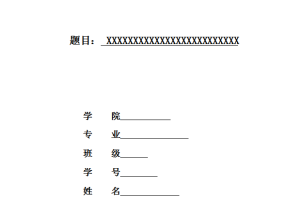摘要:20世纪90年代后,中国开始积极接受地区的概念,并将重点放在东亚地区。参加多边贸易体制是中国融入世界经济的战略选择。中国与东盟双方领导人在2002年11月签订了《中国与东盟全面经济合作框架协议》,中国-东盟自由贸易区建设正式启动,且在2010年正式成立。然而,自中国-东盟自由贸易区建设正式启动以来,中国与东盟各国之间贸易与投资往来已逐渐深入。本文在梳理和归纳相关文献的基础上,分析中国-东盟自由贸易区的贸易静态效应,并提出利用中国-东盟自由贸易区促进中国贸易增长的政策建议。
关键词:中国一东盟自由贸易区;区域经济一体化;贸易静态效应;
Abstract:Nineteen ninties, China began to actively accept the idea of area, and will focus on East Asia region.。Participate in the multilateral trade system is the strategic choice of China’s integration into the world economy。China and asean leaders in both parties signed in November 2002 《Framework Agreement on Comprehensive Economic Cooperation》,The construction of cafta official start, and opened in 2010。However, since the construction of cafta formally since the launch,Trade between China and asean countries and strengthen investment has gradually in-depth。This paper combs out and sums up the related literature, and on the basis of analysis of china-asean free trade area trade effect, and put forward the application of china-asean free trade area to promote the growth of China’s foreign trade policy suggestions.
Key words: China ASEAN Free Trade Area;Regional economic integration;Trade effect;
目 录
引言………………………………………………………………………………………………………………………… 3
一、相关文献……………………………………………………………………………………………………………. 3
二、中国—东盟自由贸易区的建设进程…………………………………………………………………………. 4
(一)中国—东盟自由贸易区的形成背景………………………………………………………………… 4
(二)中国—东盟自由贸易区的建设内容………………………………………………………………… 6
三、中国一东盟建立自由贸易区的贸易效应…………………………………………………………………… 8
(一)中国—东盟自由贸易区的贸易创造效果………………………………………………………….. 8
(二)中国—东盟自由贸易区的贸易转移效果………………………………………………………….. 8
四、结论和政策建议………………………………………………………………………………………………….. 9
(一)结论………………………………………………………………………………………………………… 9
(二)政策建议…………………………………………………………………………………………………. 10
参考文献………………………………………………………………………………………………………………… 12





